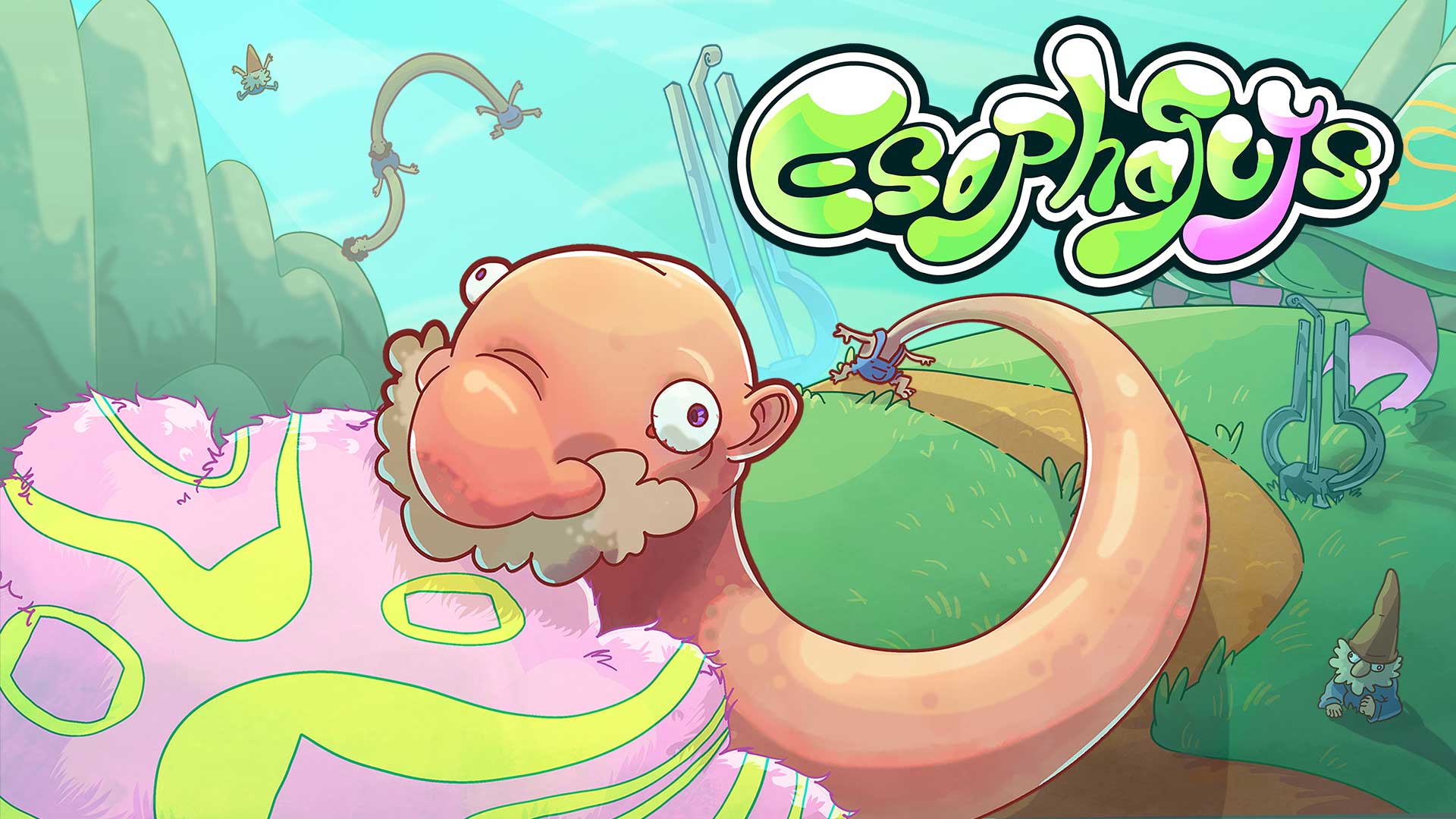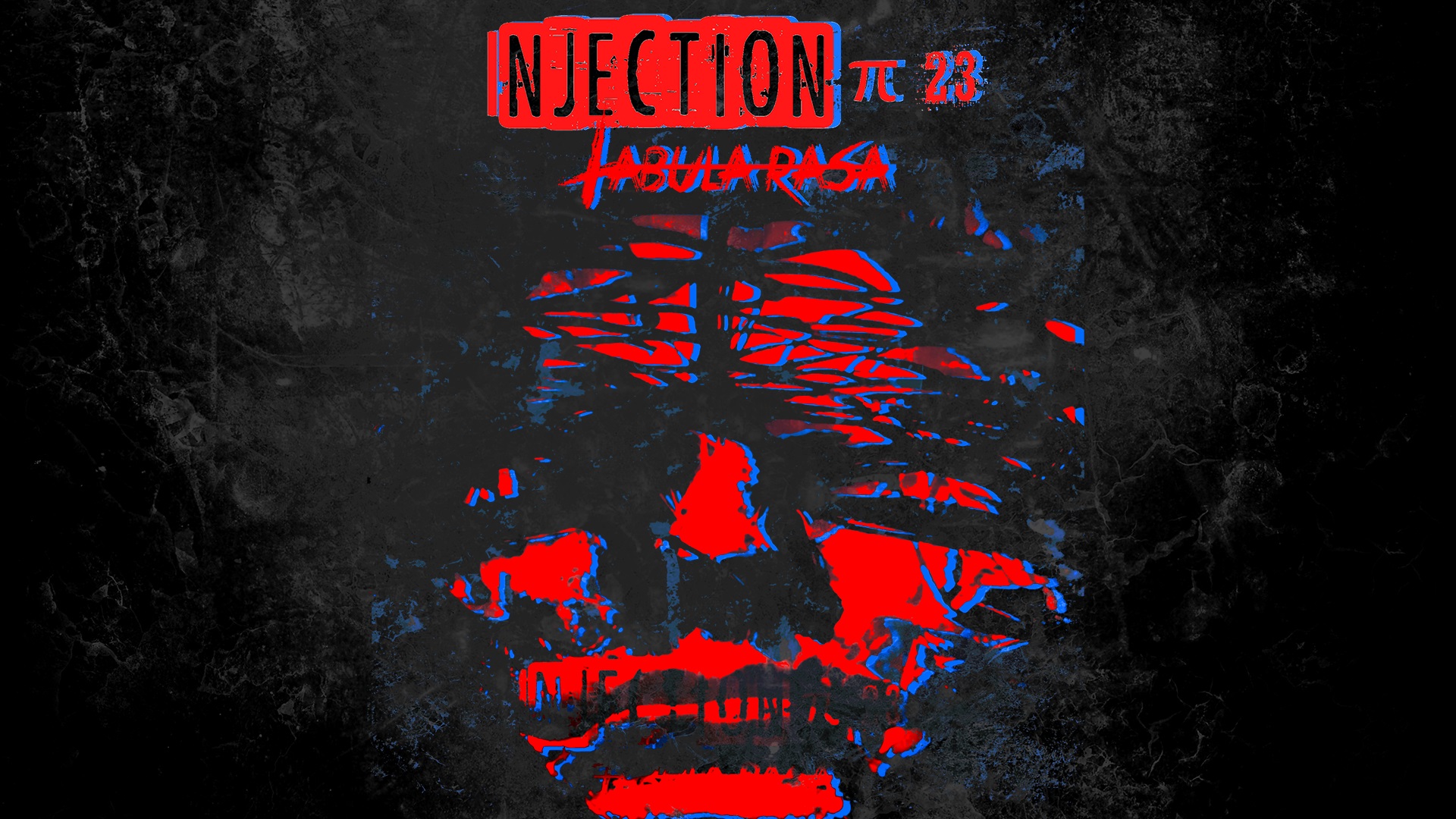Preparing for Adventure – Talking to the Creative Minds Behind Eiyuden Chronicle: Hundred Heroes
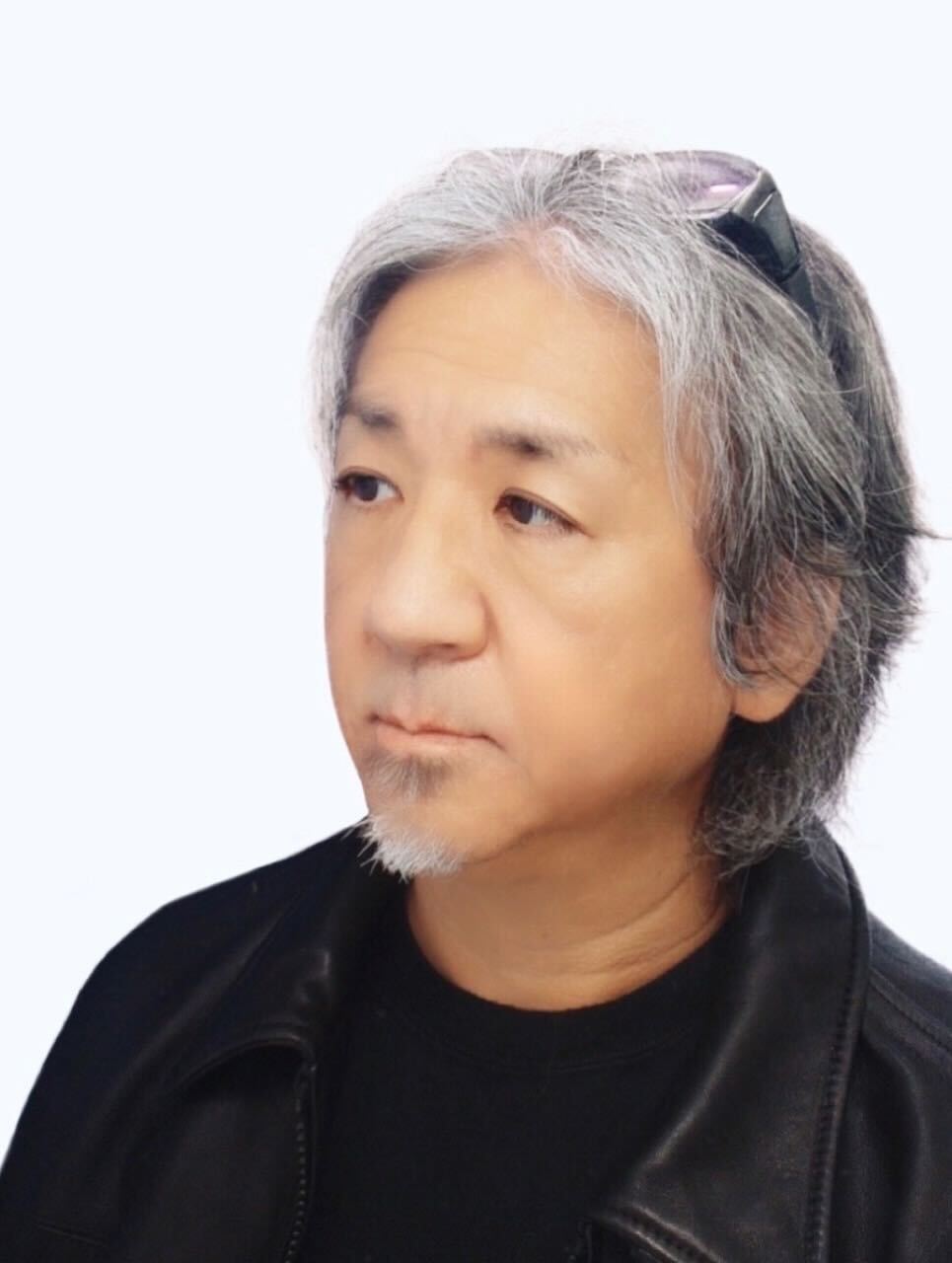
Summary
- Xbox Wire Japan recently had a chance to speak with Studio Head and Illustrator Junko Kawano, Producer and Art Director Junichi Murakami, and Director Osamu Komuta at Rabbit & Bear Studios.
- Eiyuden Chronicle: Hundred Heroes was funded via Kickstarter with a total of 46,307 backers that were eager for a new game from the creator of the Suikoden series, the late Yoshitaka Murayama.
- Eiyuden Chronicle: Hundred Heroes is available now for Xbox Series X|S, Xbox One, Windows, and with Game Pass.
Starting today, players can immerse themselves in the world of Eiyuden Chronicle: Hundred Heroes, which continues a rich legacy of memorable JRPGs guided by the stewardship of the late Yoshitaka Murayama and his team at Rabbit & Bear Studios.
Funded via Kickstarter back in 2020, with a total of 46,307 backers that were hungry for more Murayama-esque game experiences like Suikoden, Eiyuden Chroncole: Hundred Heroes is now available for players on Xbox Series X|S, Xbox One, Windows, as well as with Game Pass.

Producer and Art Director Junichi Murakami
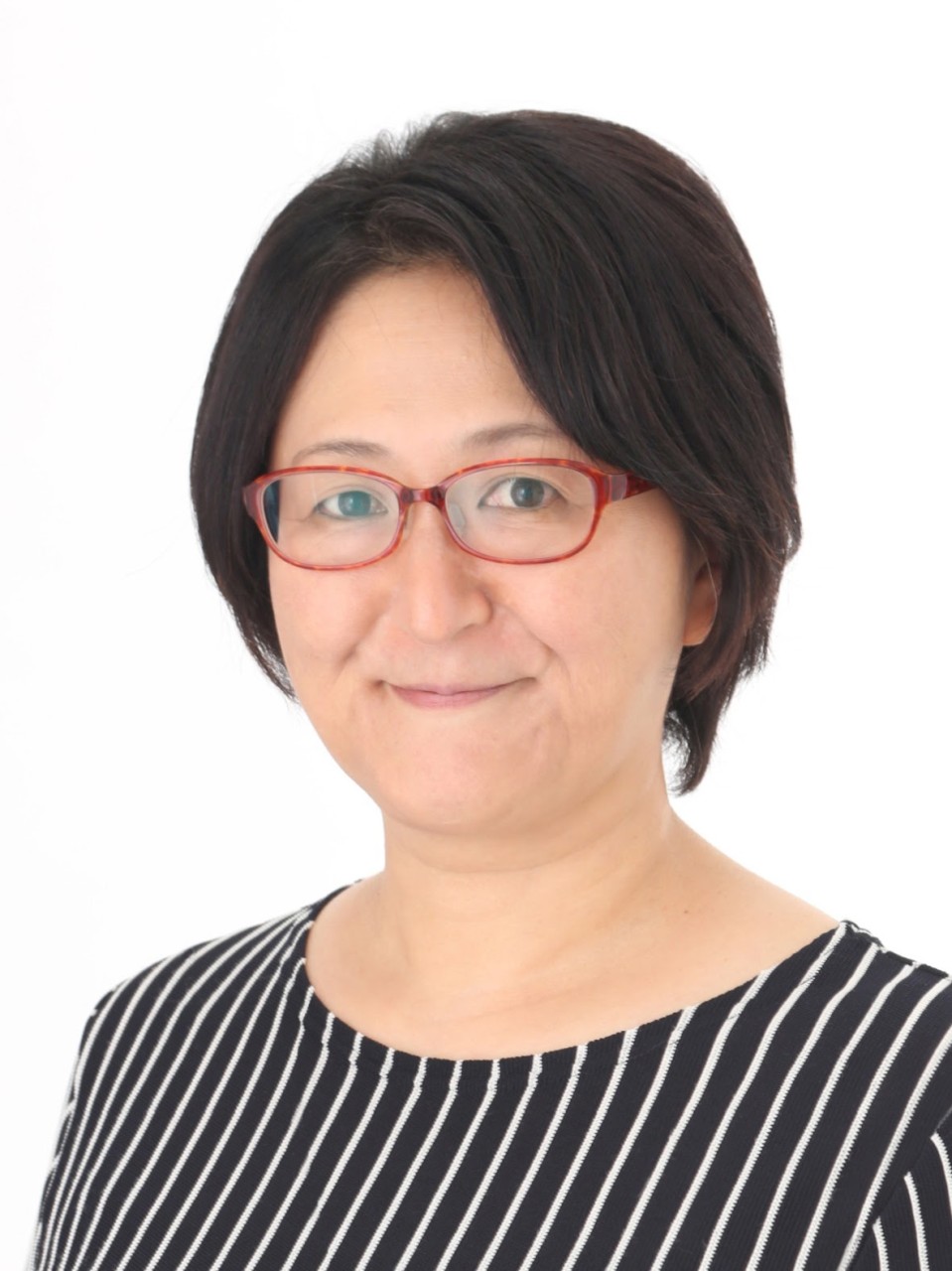
Studio Head and Illustrator Junko Kawano
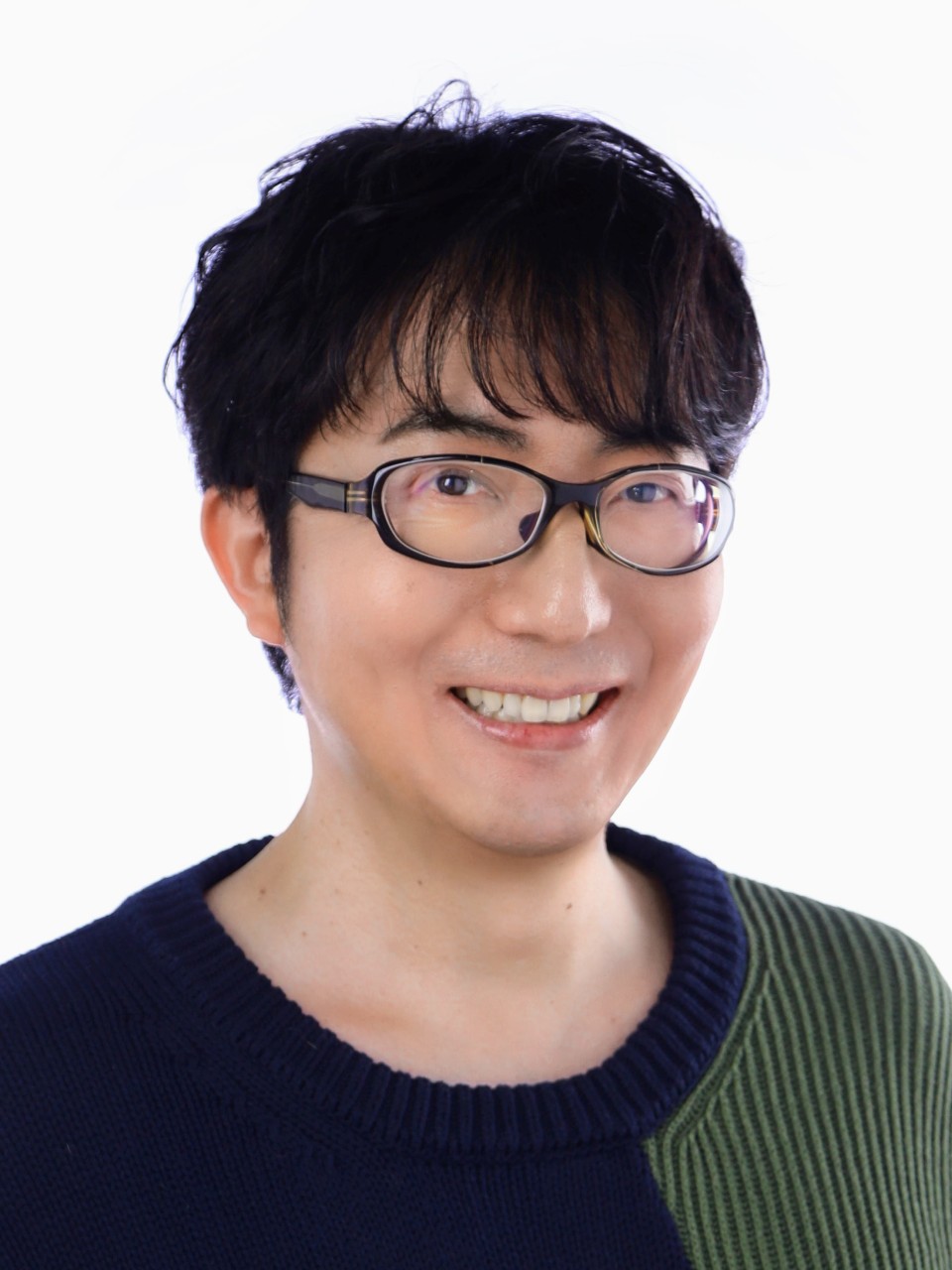
Director Osamu Komuta
To commemorate its launch, Xbox Wire Japan recently had a chance to speak with Studio Head and Illustrator Junko Kawano, Producer and Art Director Junichi Murakami, and Director Osamu Komuta at Rabbit & Bear Studios, where the team’s sincere responses conveyed how much Hundred Heroes embodies the vision of Murayama, with a team that was built around the desire to make “the most interesting game of [their] lives”.
The Kickstarter launched back in July 2020, and now Hundred Heroes is nearly here. How are you feeling?
Producer and Art Director Junichi Murakami: Actually, I haven’t settled down emotionally at all yet. There is a sense of relief that we can finally deliver the product to everyone, but there are still some things that we won’t know until it goes on sale. Although I am anxious in some ways, there is a sense of accomplishment in knowing that we have finally come this far after working hard together for a long period of time.
Director Osamu Komuta : We have been working on this game for about three and a half years now, so we are all exhausted (laughs). We have been working hard as a team to patch the game, but now we are closing into the release of the game. On one hand, I am a bit relieved, but on the other hand, as Murakami mentioned, I am also excitedly waiting to hear the reactions of the players as the game goes on sale in two weeks’ time.
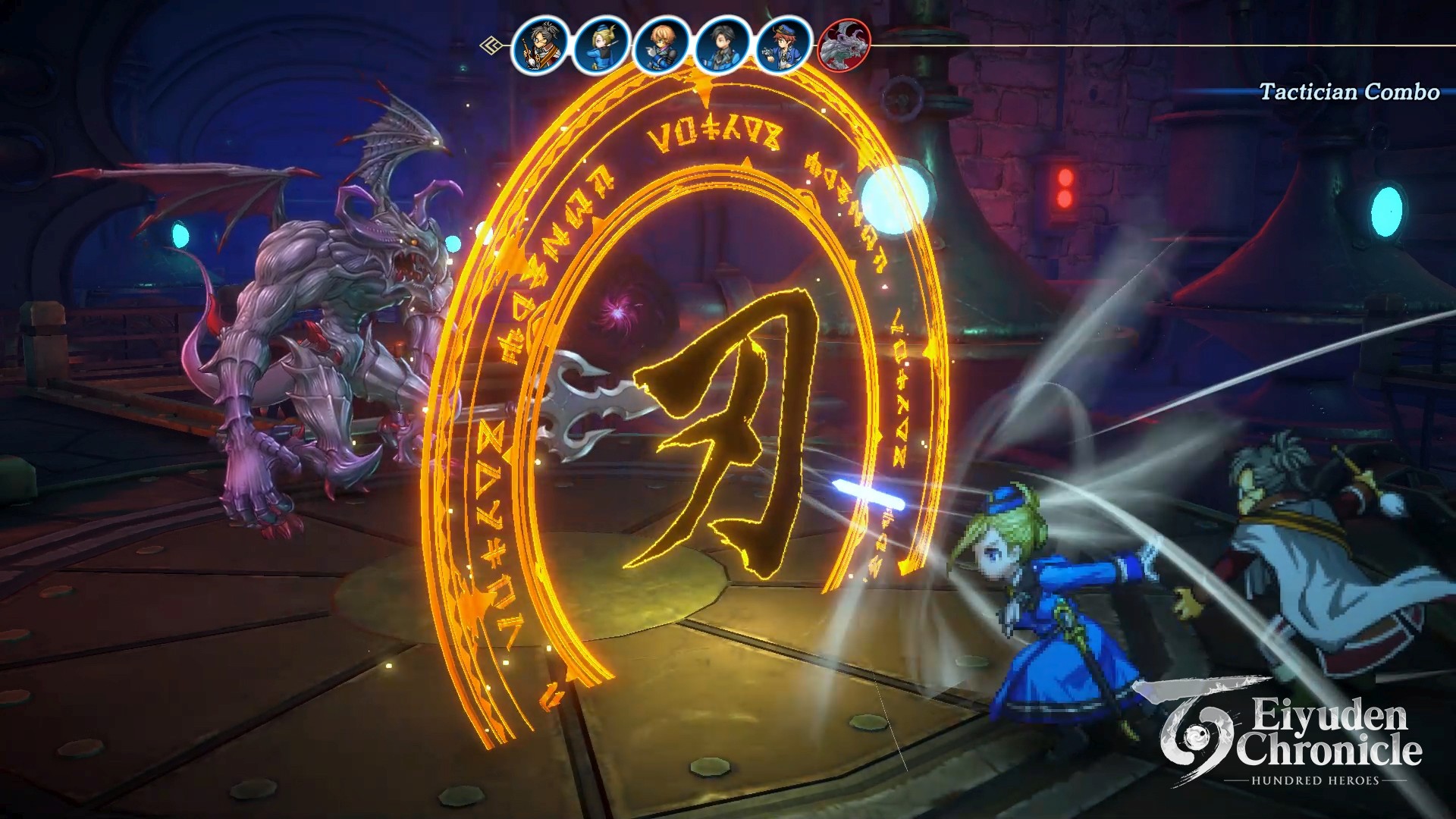
Studio Head and Illustrator Junko Kawano: I feel pretty much the same way as those two do, so they’ve done most of the talking. It’s been too long since I’ve worked on a consumer title, and I feel like, “Well, nowadays pretty much everyone is already working on patches”, so I really have to keep going until the very last minute… I wonder if I’ll feel done once it’s released and everyone has played it.
What are the highlights of Hundred Heroes, from your perspective, especially the parts you would like people to pay attention to?
Komuta: As the title suggests, there are a lot of characters. We want players to go on adventures with their favorite party and prepare for battles with them. We also want them to try using characters they meet along the way, and hopefully enjoy switching characters around. In most RPGs, you would train the skills of, or you explore the power of individual characters, but in HH, the fun is rooted in the variety of characters. The depth of the game becomes based on the number of characters that you have trained and brought up.
Murakami: In terms of design, we have put a lot of thought into each of the characters and made sure that each had a distinct personality. Even for a single mini game, the characters have different looks prepared just for that game. Basically, I don’t think we have cut any corners, so if you play through the game thoroughly, I think you will see many good things that you expected when starting to play the game.
What are some of the aspects of Hundred Heroes that you focused on from a JRPG standpoint?
Murakami: I’m sure each of us has our own thoughts on various things and what we were particular about, but I believe JRPGs are unique in the way they portray the nature of the story and the characters. There is always an added element where “anything goes in a JRPG.” RPGs from overseas pursue reality, but in the case of JRPGs, after an intense battle, the players are suddenly spending time in a hot spring (laughs). I think the beauty of JRPGs is that they contain a flexible mindset where fun is hybrid, allowing players to start playing with cards regardless of location. I feel that Hundred Heroes has been able to bring that essence out very well.
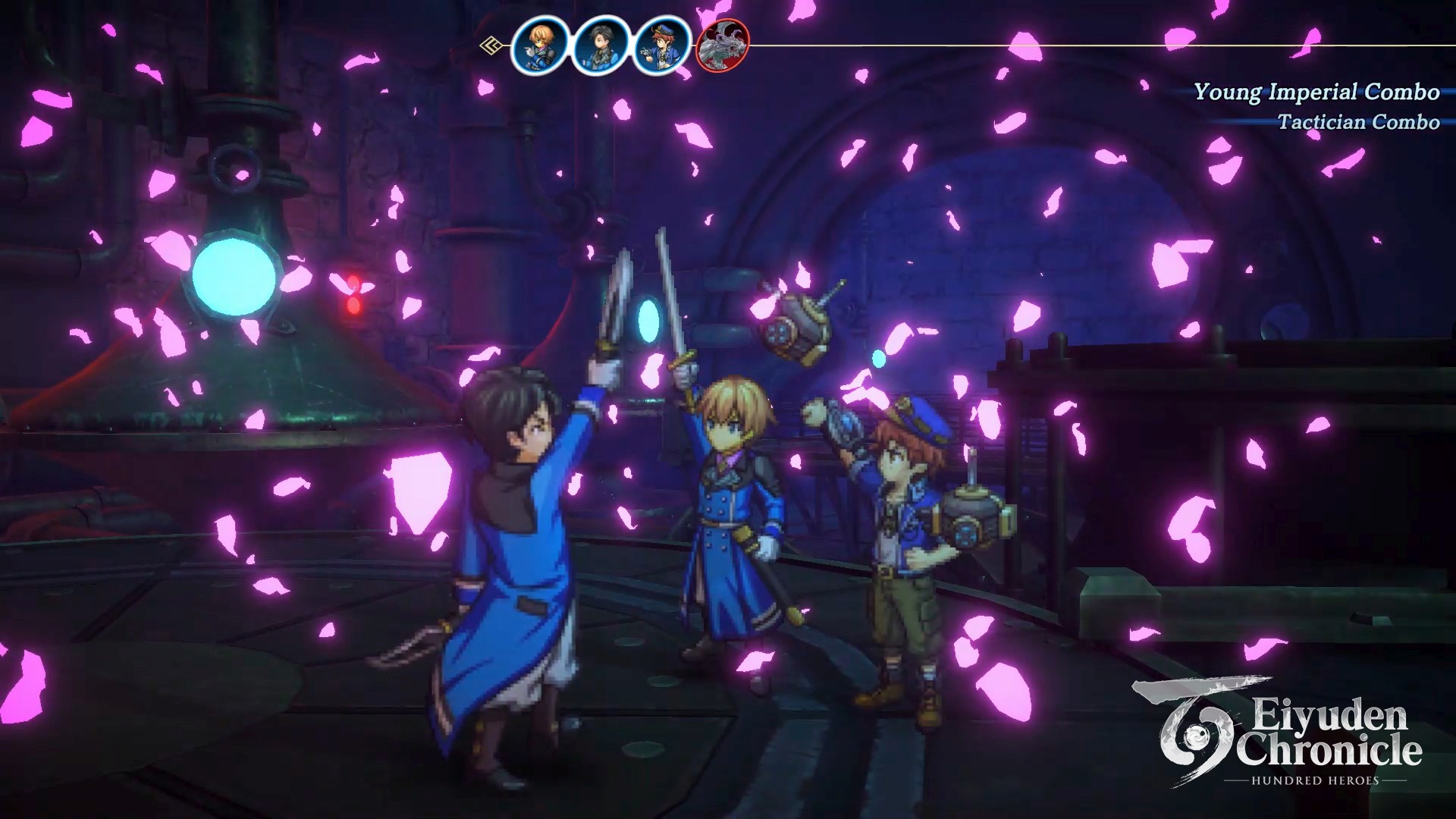
Komuta: Murayama always talked about the makunouchi bento when explaining RPGs. He would say that “RPGs had a variety of side dishes, and every one of them is delicious”. Surely, there is a storyline that runs through the richness of variation and variety like a makunouchi bento. But if you take a side trip for a break, you can soak in a hot spring, play a card game, get into the theater…… and have fun. There are many variations in the story.
We were particularly careful about making sure that when the player goes off on a tangent, the game will have a proper reaction to whatever he or she does. Even a single line of dialogue may change depending on the party you have formed, so I believe that players will enjoy the abundance of options and the development the game provides in response to their choices.
The pixel art of the characters in Hundred Heroes is extremely detailed, which seems to be a rare direction to take these days. How did you decide on this?
Murakami: When we first started planning the game, we had already decided to make it an evolution of pixel art, or dots. When we began to consider what kind of resolution we wanted to use, we started with a size that was familiar from old games, but we realized that if we continued in this manner, it would be difficult to distinguish the individuality of the more than 100 characters Kawano had created, and it would also be difficult to express the individuality of the characters themselves.
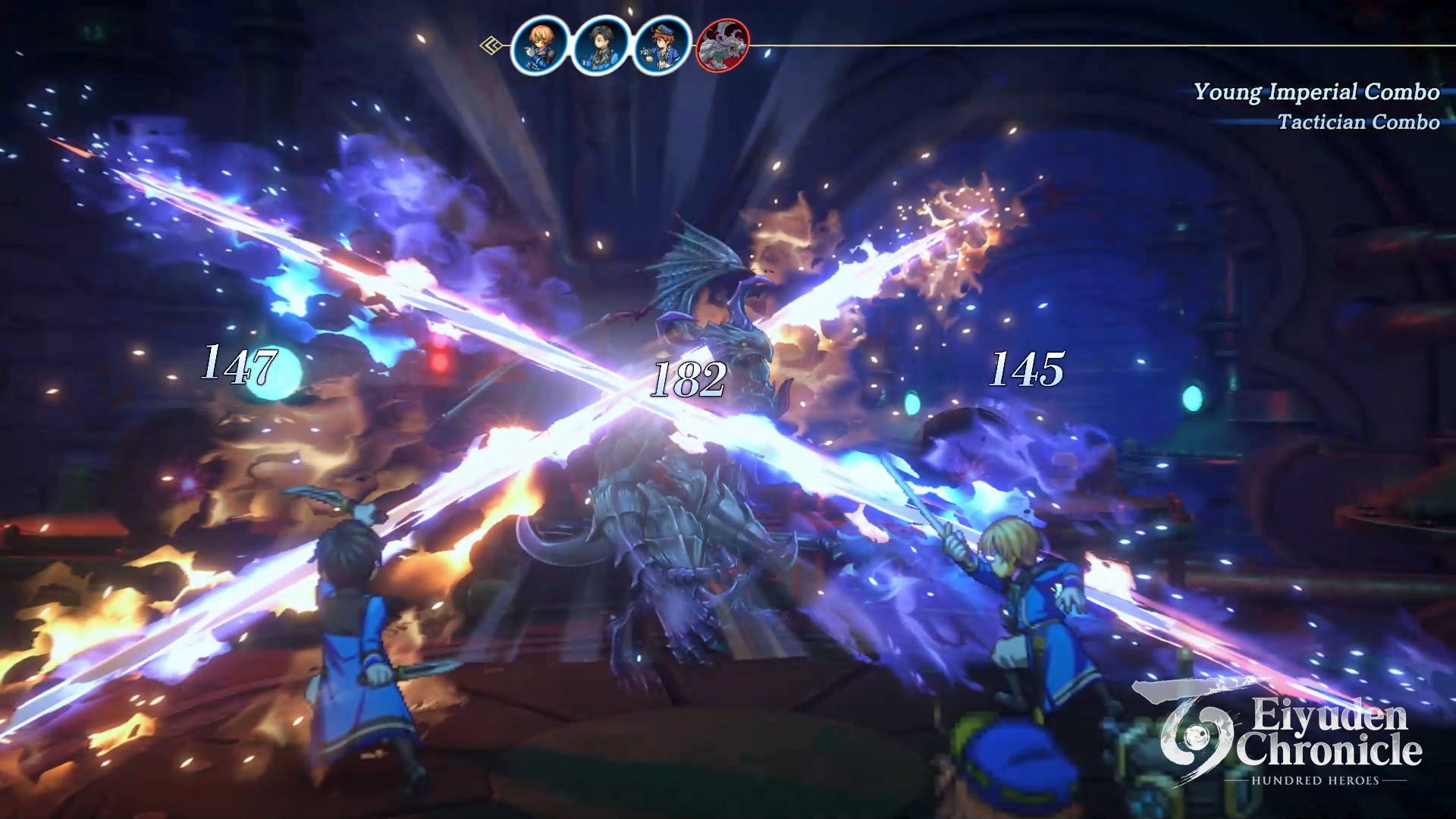
In addition, the expressions themselves seemed a bit old-fashioned, so we decided to increase the resolution. However, increasing the resolution would inevitably increase the number of dots, so the amount of work increased. Furthermore, if the resolution is increased too far, the pixel art may end up becoming more like an illustration.
After trying various methods, we decided that the current size would require more technique, but would allow us to properly express the detailed design and accessories that adorn the characters Kawano has created. The size and feel of the design matched the sense of expression that we were looking for.
There are several battles available: normal battles (with a party of 6), boss battles, duels (1 vs. 1), and wars. What are the highlights and key points of each? Also, was the decision to use random encounters based on the feel of old JRPGs?
Komuta: The adoption of random encounters was based on the premise that this game was a JRPG. In addition to this, Murayama’s idea of RPGs was to make it possible for anyone to complete the game, even if may the first time in their lives that they have played such game. So long as you know the basic rules, anyone can advance and complete the story in HH.
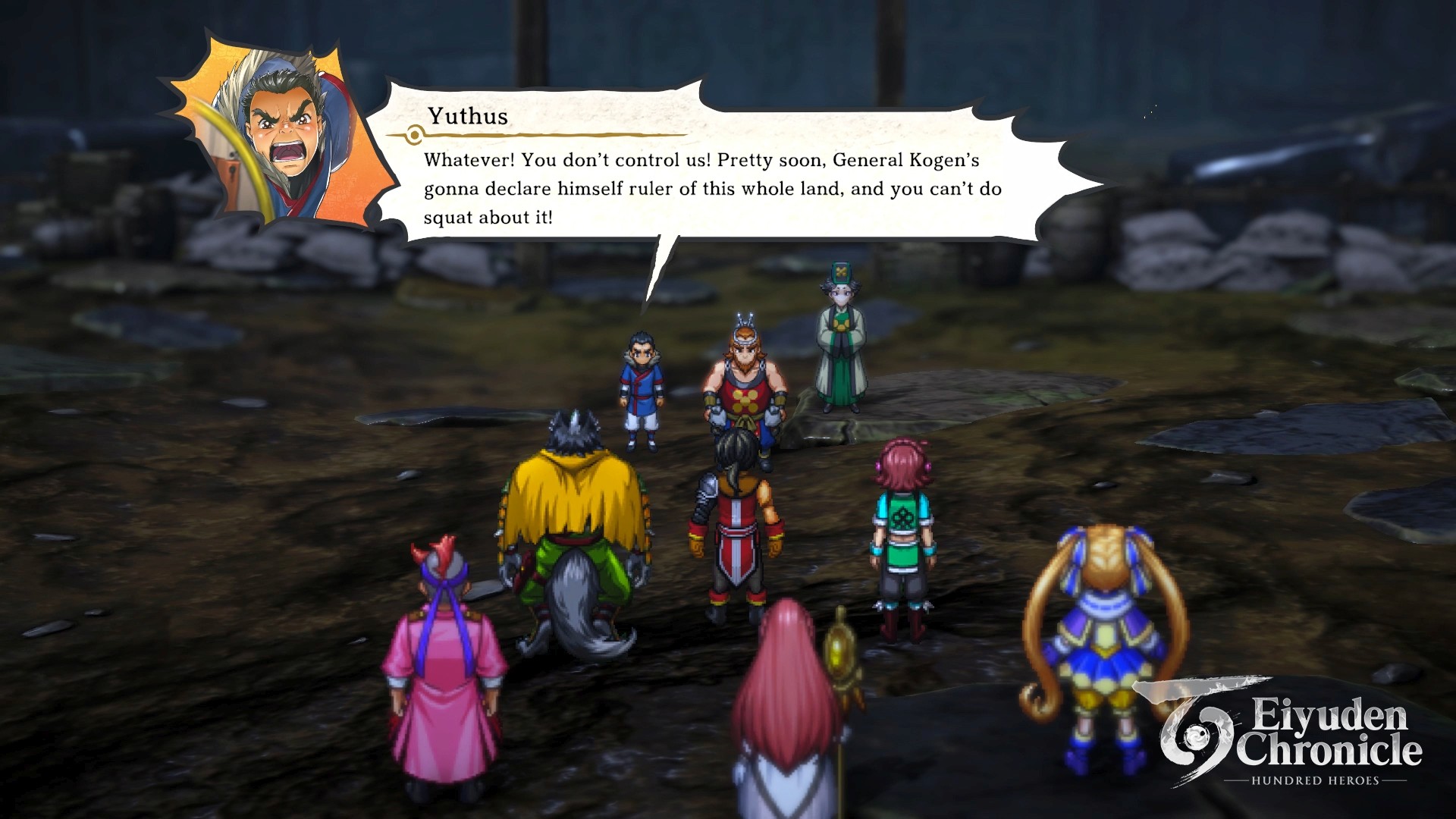
At first, we considered using symbolic encounters, but we decided to use random encounters for this game, as we thought it would be easier for players to understand (the game). We also wanted to respect the initial concept of clearly separating between the scenes, namely when the games switch between normality and battle.
In the very early stages of planning, we had two ideas, and one of them was to have the battle transition occur on the spot, which is very common these days. The idea also came up during the planning stage, but since we wanted to express the transition properly, we decided to use random encounters with clear transitions, that would set the tone and mood and prepare the player for battle. The battles themselves are rather simple command battles; even if you are new to the JPRG genre, once you get used to it and start leveling up, you will be able to move on within the story.
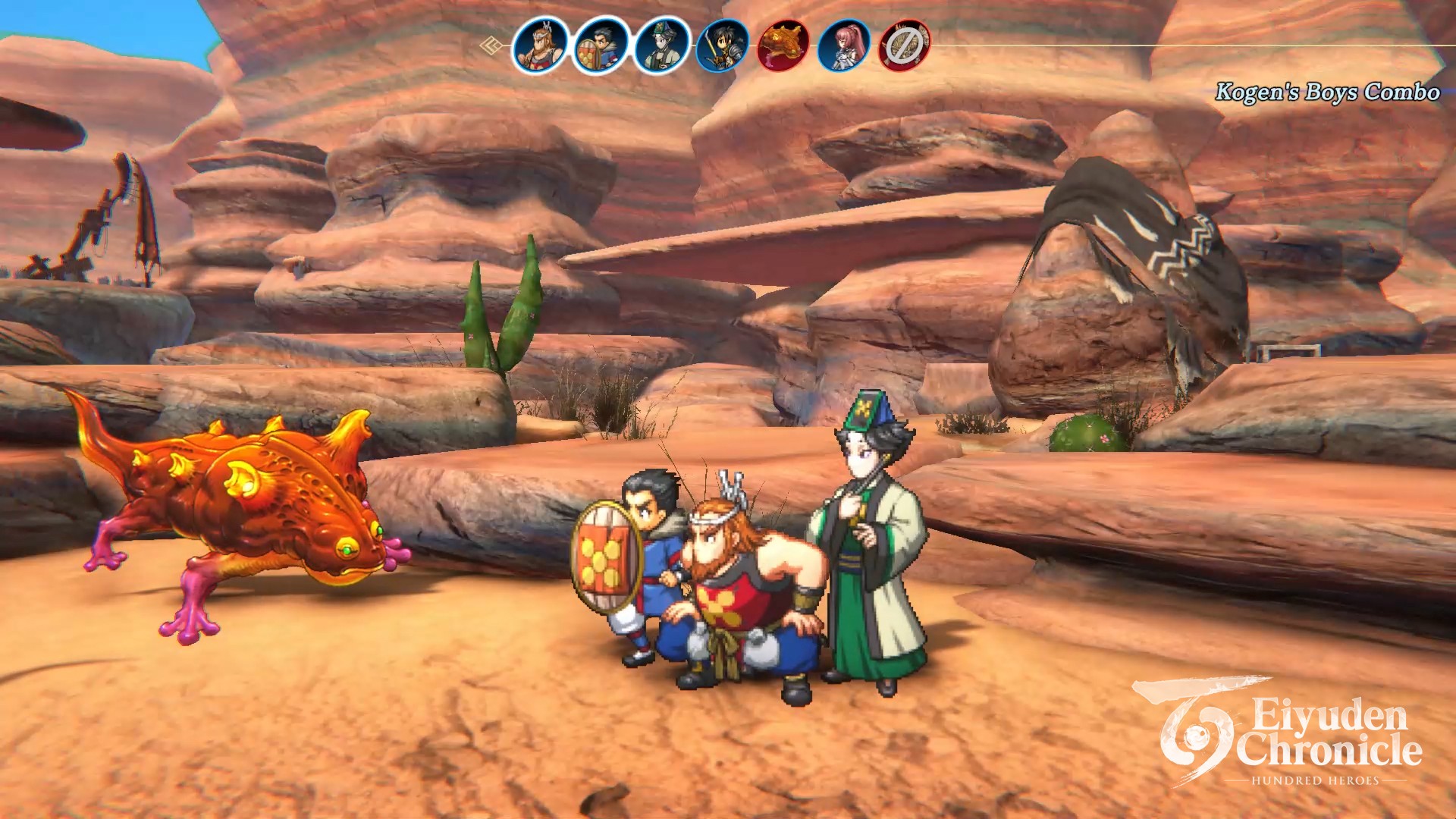
Of course, there is an element of challenge in the game. The higher you set the difficulty within the game, the more you will have to play around the attributes and the order of actions. There are plenty of challenging battles waiting for you, and we hope players will have a great time strategizing and overcoming.
The system of strongholds, one-on-one battles, wars, etc. were also seen in Gensou Suikoden. Did you intend to include these systems from the beginning of the project? Is there a reason why you decided to use it again in Hyaku Eiyouden? Also, what did you change from the past games to better suit today’s game experience?
Murakami: All of these elements were included in the Kickstarter stretch goal, including war, single combat, and the Fortress Town.
Kawano: Including the cook-offs, too.
Murakami: The backers are fans of Murayama’s games, so it seems that those elements were required. All of them were realistic targets if we got the budget and time frame right, so we included them as items, but we’ve already accomplished all of them. We started from the point where we had to aim to include all the elements we promised in the Kickstarter program.
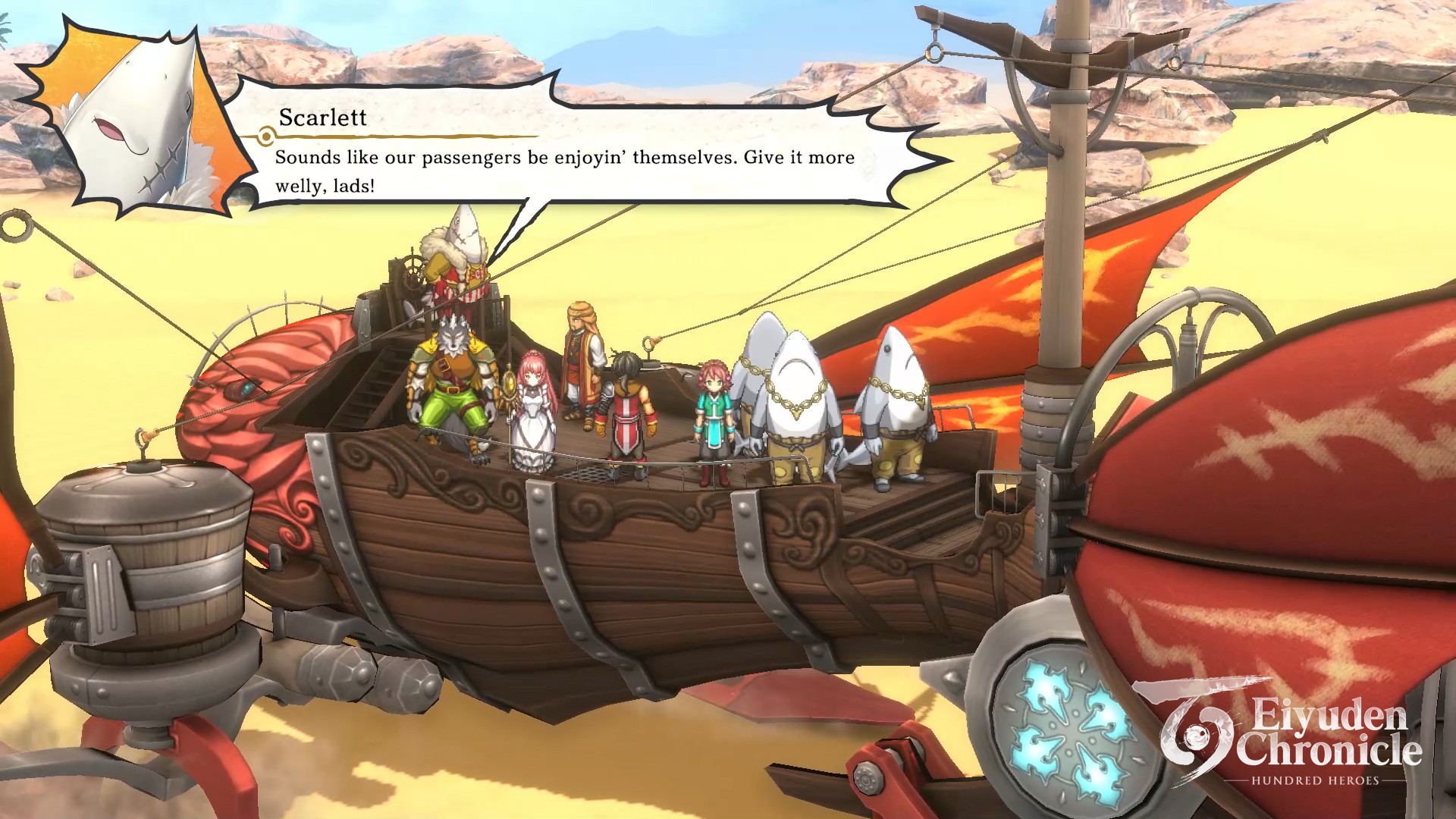
Komuta: From the very beginning of the project, we wanted to develop the Fortress Town aspect of the game. We were not talking about a castle where everyone could gather, but rather a town where people could build their own town, as if we were putting in a whole other game where people could build their own town.
Murakami: It was borderline crazy to think of such thing (laughs).
Komuta: It is true that when we started imagining the Fortress Town, it was not an easy task. It may have been better if it was just an automatic progression of elements, such as the city growing as it levels up, but this time, we wanted to includes elements such as building structures of your own choosing, and calling in the people needed to build and maintain them. Some people told me that I was making another game within the game (laughs).
Murakami: Once you get into that phase, HH gets more and more interesting. In the beginning, you don’t even have the Fortress Town.
What kind of response did you receive from overseas players (after Kickstarter)? Were there any regions where the response was particularly strong?
Murakami: Originally, HH started with the fact that Murayama had many fans overseas, since Kickstarter and crowdfunding in general has not been too familiar within Japan. That’s why we didn’t include Japan in our crowdfunding activities at first. When the crowdfunding started, we came to think, “No, there are definitely Murayama fans in Japan as well,” so we decided to approach them too, and thus the order was first overseas and then domestic. The game itself is developed by Japanese people with Japanese sensibilities, so it will have a JRPG-like finish. We have been trying to create something that is uniquely Japanese, rather than focusing on foreign countries.
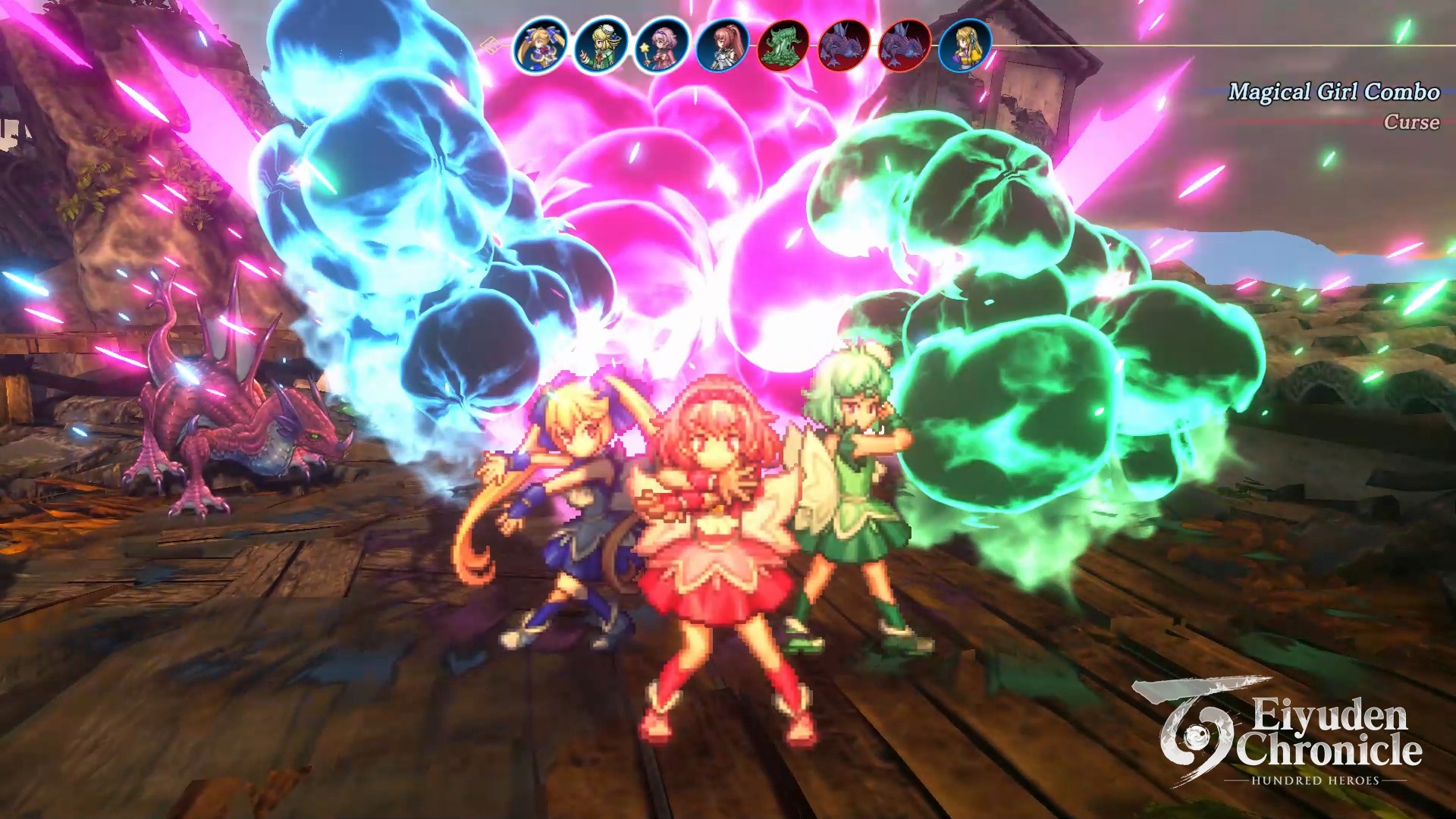
Kawano: In terms of the response from people overseas, we received support for “making a game that Murayama likes,” and we expected that there would be many fans around the world. In fact, when we launched the crowdfunding, the largest number of support came from the U.S., and the second largest was from Japan. Besides that, we also have received support from France and the Asian region, but also from Brazil, and really from all over the world. We didn’t really prepare anything special for any one place, but unlike Japanese fans, we received requests from American fans that are a bit more hardcore, such as wanting a mode with a higher level of difficulty.
Eiyden Chronicle: Hundred Heroes will be available on day one with Game Pass. What is your impression of the subscription service?
Murakami: When the idea of distributing Hundred Heroes through Game Pass first came up, It got me thinking since I was yet to consider it as an option. I thought it over very well and decided that our priority should be to spread awareness of Hundred Heroes rather than to aim for the stars with the first game.
When we settled on this direction, we realized that our core fans had already turned their attention to us. The backers of Hundred Heroes are the most important, and we will produce the work they wish, but I felt that their support alone would not be enough to continue the series — if that was the only way to continue the series, it would not last.
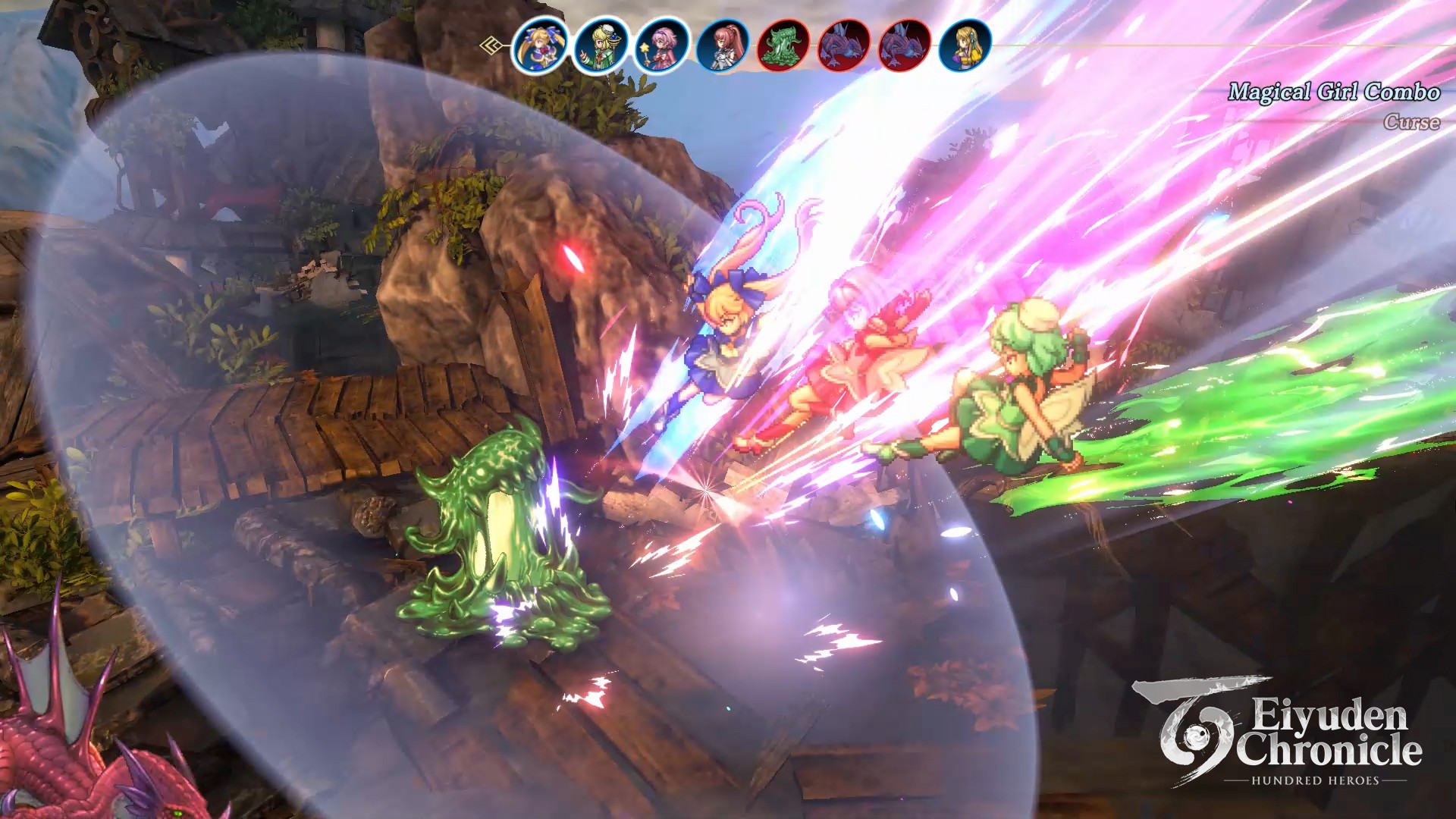
What I had to do as a producer was to increase the number of people who could play Hundred Heroes and broaden the base of the fan community. I thought that Xbox Game Pass would be the best way to increase opportunities for people who have never played this genre to pick up the game and see it. After considering these ideas, we decided that we should go for it.
Can you tell us about some of the memorable events in the development of Hundred Heroes?
Murakami: Memories abound (laughs). One of the things that was unprecedented was the (COVID) lockdown during development. I have very fond memories of that special environment, where we had to team up with people we didn’t know and had never met face-to-face from the beginning of development to create the game.
Komuta: About half of the people on my team have never met me face-to-face.
Kawano: Everything was done online, mostly from home.
Murakami: There are many such episodes. But the most memorable one was when Murayama and I launched the Kickstarter project.
Komuta: After we launched the Kickstarter, we reached our goal in an instant. We all went a little crazy at that moment.
Murakami: If it were a lottery ticket or something, I would simply be happy, but in the case of crowdfunding, the more it goes up, the more I got worried.
Kawano: Yes, you feel the sense of responsibility building up (laughs).
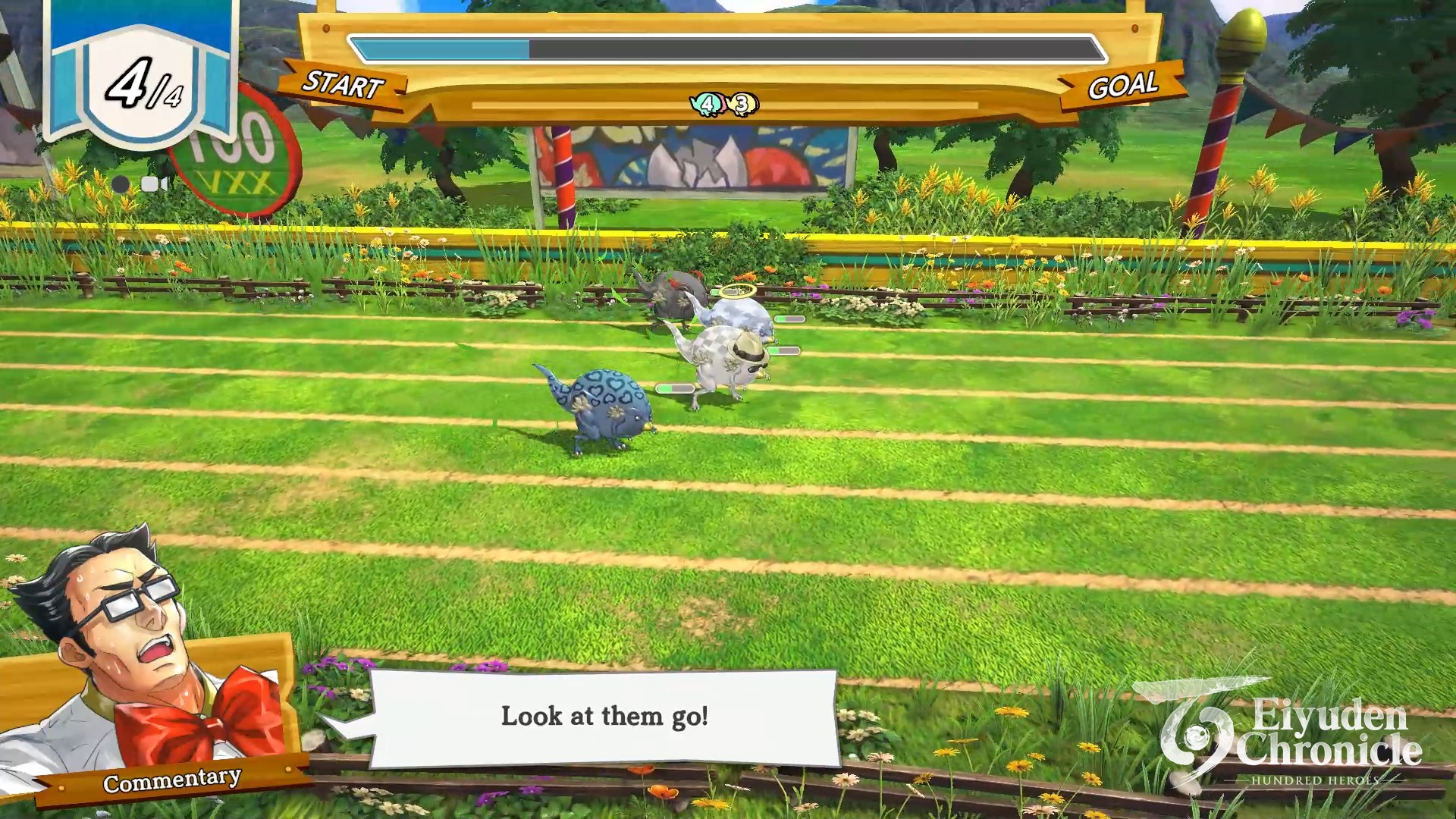
Komuta: I couldn’t believe our dream would gather so much support.
Murakami: I got the feeling that the expectations were being taken on board in a new way.
Komuta: I felt like I was taking on something great.
Kawano: While I felt grateful, it also came with a feeling of heavy commitments being placed on my shoulders.
Murakami: I had the feeling that there was no way I could escape from this (laughs).
Komuta: I had a lot of mixed feelings running through me, but above all, I was happy. Even now, I can’t forget what Murayama said at that moment. He said something along the lines of, “I can’t stop my hands from shaking”.
Kawano: It was like that from the beginning, and it was a special kind of game production right up to the end.
Lastly, what is your message to Xbox players who are new to the JRPG genre?
Kawano: We have created a place where people can play in a variety of ways. We hope you will enjoy the game, because we have created a game that can be played in any way you like and can be fun no matter where you pick up the pieces.
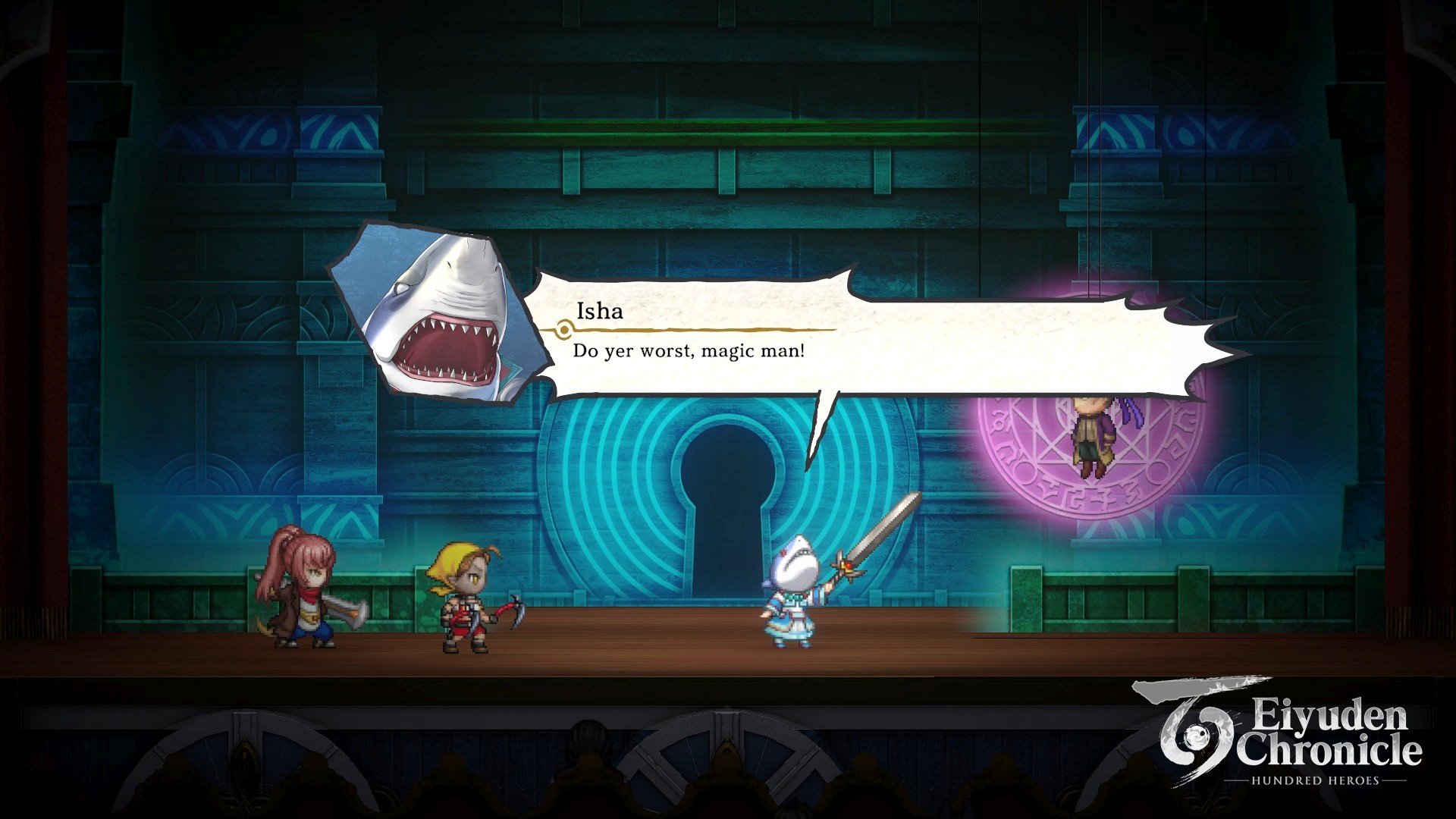
Komuta: If you play the game normally, you may get the feeling that “It’s just a regular JRPG”, but if you enjoy the deep variations, such as taking side trips, going off to the side, gathering your friends and changing to a different party, I think you will find HH very interesting. If you enjoy these side contents, I can guarantee you will feel the fun of HH.
Murakami: It is difficult to imagine what kind of person might experience a JRPG for the first time. But one thing I am sure of is that whoever experiences JRPGs through HH for the first time will find everything new and fresh. I think they will be able to enjoy a game they have never played before, a type of worldview they have never traveled in, and a feeling they have never had before. We have used different voice actors for all the characters. All characters have their movements and effects changed in detail, and there are also scenarios for each of them. Overall, I think you can enjoy the game without thinking too hard about it. There is not a single difficult thing to do, so in that sense, I hope that newcomers will feel free to give it a try.
Eiyuden Chronicle: Hundred Heroes is available now for Xbox Series X|S, Xbox One, Windows, and with Game Pass.
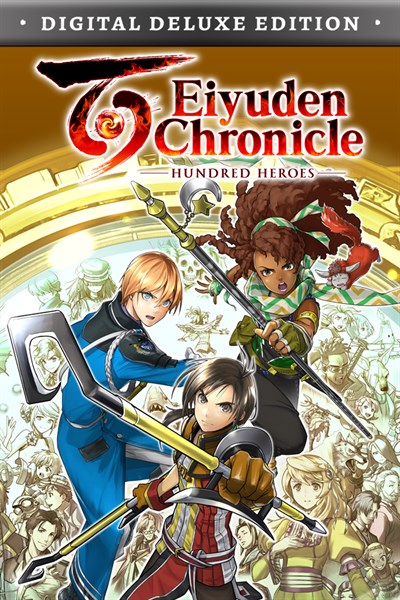

Eiyuden Chronicle: Hundred Heroes – Digital Deluxe Edition
505 Games
$79.99
Get the most out of your adventure with the Digital Deluxe Edition, which includes the following content:
• Eiyuden Chronicle: Hundred Heroes full game
• 1x Easy Journey Pack: (6x Healing Herb, 4x Healing Incense, 2x Revive Medicine. 3x Runeshard of Return, 1x Gold Coin)
• 1x Headquarters Custom Object
• Season Pass: [3x Original Wallpapers by Junko Kawano, Story Expansion: The Chapter of Seign, Story Expansion: The Chapter of Marisa, Story Expansion: The Chapter of Markus and HQ Makeover Pack (Golden & Pink Headquarters Exterior Paint)]
• Digital Mini Artbook
• Digital Soundtrack
Our story begins in one corner of Allraan, a tapestry of nations with diverse cultures and values. By dint of sword, and by way of magical objects known as “rune-lenses,” the land’s history has been shaped by the alliances and aggressions of the humans, beastmen, elves, and desert people who live there.
The Galdean Empire has edged out other nations and discovered a technology that amplifies the rune-lenses’ magic.
Now, the Empire is scouring the continent for an artifact that will expand their power even further. It is on one such expedition that Seign Kesling, a young and gifted imperial officer, and Nowa, a boy from a remote village, meet each other and become friends.
However, a twist of fate will soon drag them into the fires of war, and force them both to reexamine everything they believe to be right and true.
Eiyuden Chronicle: Hundred Heroes became the #1 funded Kickstarter video game of 2020 thanks to phenomenal support from the community. 505 Games is truly honored to publish Eiyuden Chronicle and work with Rabbit & Bear to help deliver a memorable gaming experience to fans. The goal of Rabbit & Bear and 505 Games is to make sure Eiyuden Chronicle reaches its true potential and delivers a worthwhile JRPG the community will enjoy.
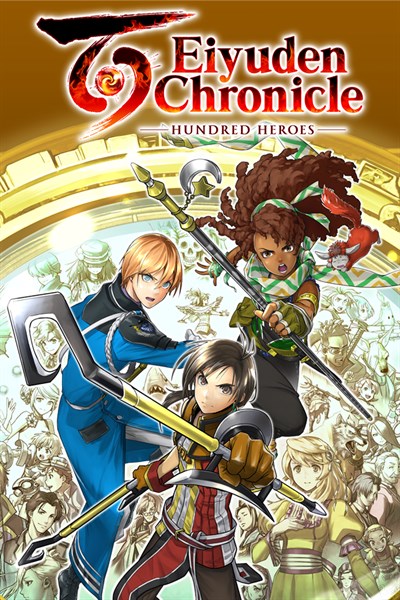

Eiyuden Chronicle: Hundred Heroes
505 Games
$49.99
PC Game Pass
Xbox Game Pass
Our story begins in one corner of Allraan, a tapestry of nations with diverse cultures and values. By dint of sword, and by way of magical objects known as “rune-lenses,” the land’s history has been shaped by the alliances and aggressions of the humans, beastmen, elves, and desert people who live there.
The Galdean Empire has edged out other nations and discovered a technology that amplifies the rune-lenses’ magic.
Now, the Empire is scouring the continent for an artifact that will expand their power even further. It is on one such expedition that Seign Kesling, a young and gifted imperial officer, and Nowa, a boy from a remote village, meet each other and become friends.
However, a twist of fate will soon drag them into the fires of war, and force them both to reexamine everything they believe to be right and true.
Eiyuden Chronicle: Hundred Heroes became the #1 funded Kickstarter video game of 2020 thanks to phenomenal support from the community. 505 Games is truly honored to publish Eiyuden Chronicle and work with Rabbit & Bear to help deliver a memorable gaming experience to fans. The goal of Rabbit & Bear and 505 Games is to make sure Eiyuden Chronicle reaches its true potential and delivers a worthwhile JRPG the community will enjoy.

